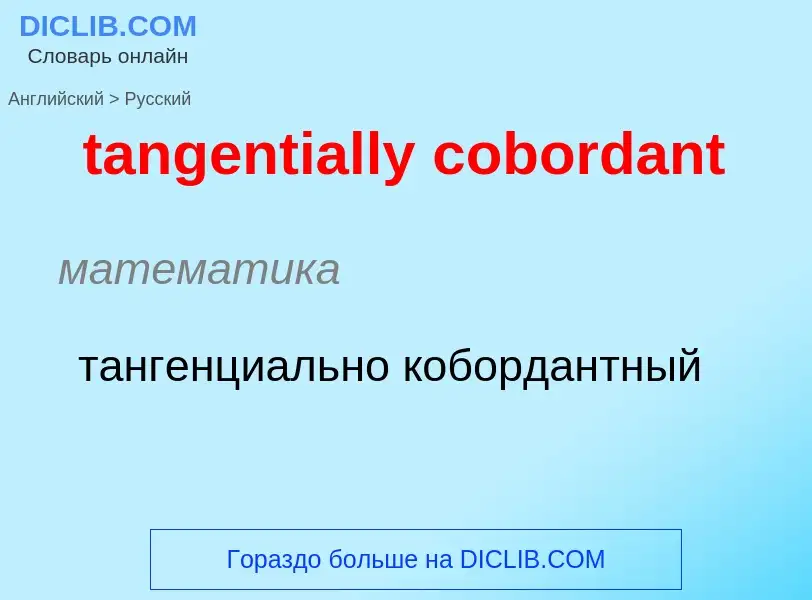Translation and analysis of words by ChatGPT artificial intelligence
On this page you can get a detailed analysis of a word or phrase, produced by the best artificial intelligence technology to date:
- how the word is used
- frequency of use
- it is used more often in oral or written speech
- word translation options
- usage examples (several phrases with translation)
- etymology
tangentially cobordant - translation to russian
математика
тангенциально кобордантный
общая лексика
бордизм
бордантность
[kəu'bɔ:diz(ə)m]
общая лексика
кобордизм
внутренняя гомология
существительное
математика
кобордизм
внутренняя гомология
Wikipedia
In mathematics, cobordism is a fundamental equivalence relation on the class of compact manifolds of the same dimension, set up using the concept of the boundary (French bord, giving cobordism) of a manifold. Two manifolds of the same dimension are cobordant if their disjoint union is the boundary of a compact manifold one dimension higher.
The boundary of an (n + 1)-dimensional manifold W is an n-dimensional manifold ∂W that is closed, i.e., with empty boundary. In general, a closed manifold need not be a boundary: cobordism theory is the study of the difference between all closed manifolds and those that are boundaries. The theory was originally developed by René Thom for smooth manifolds (i.e., differentiable), but there are now also versions for piecewise linear and topological manifolds.
A cobordism between manifolds M and N is a compact manifold W whose boundary is the disjoint union of M and N, .
Cobordisms are studied both for the equivalence relation that they generate, and as objects in their own right. Cobordism is a much coarser equivalence relation than diffeomorphism or homeomorphism of manifolds, and is significantly easier to study and compute. It is not possible to classify manifolds up to diffeomorphism or homeomorphism in dimensions ≥ 4 – because the word problem for groups cannot be solved – but it is possible to classify manifolds up to cobordism. Cobordisms are central objects of study in geometric topology and algebraic topology. In geometric topology, cobordisms are intimately connected with Morse theory, and h-cobordisms are fundamental in the study of high-dimensional manifolds, namely surgery theory. In algebraic topology, cobordism theories are fundamental extraordinary cohomology theories, and categories of cobordisms are the domains of topological quantum field theories.




